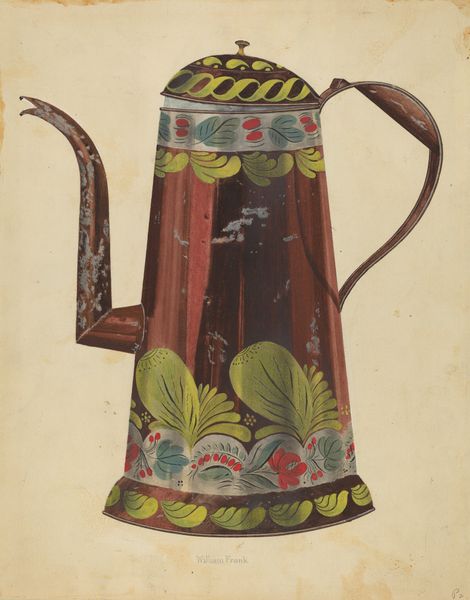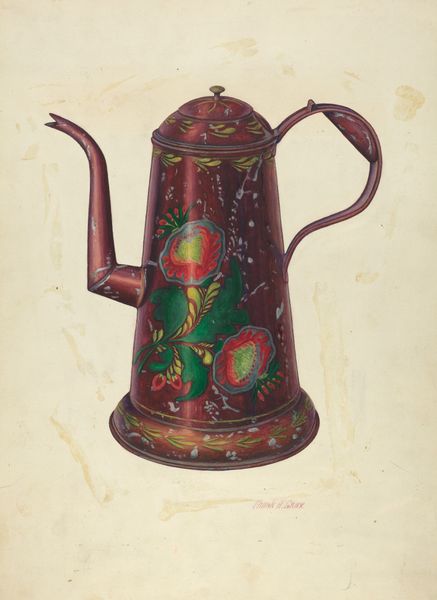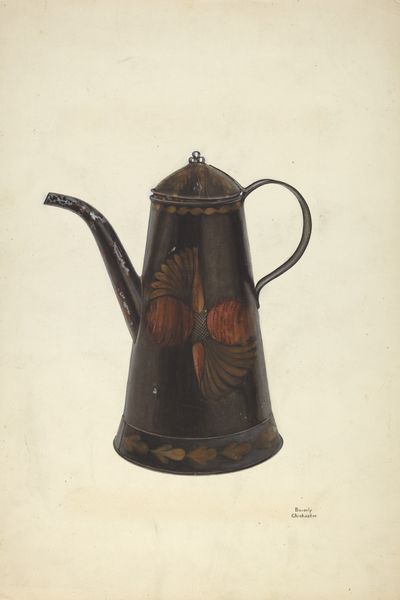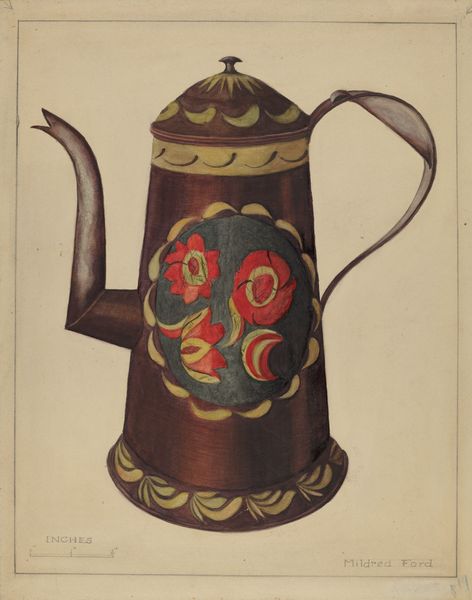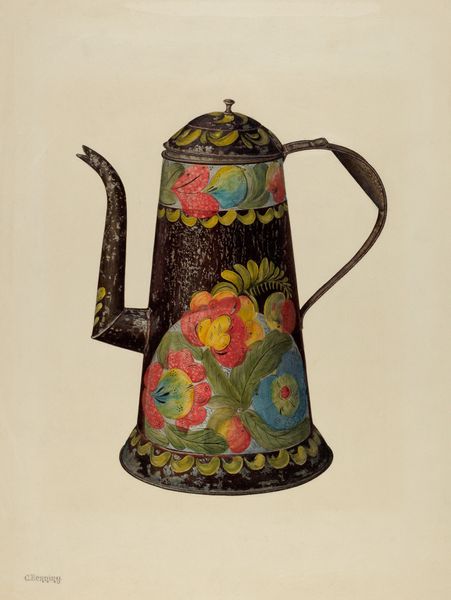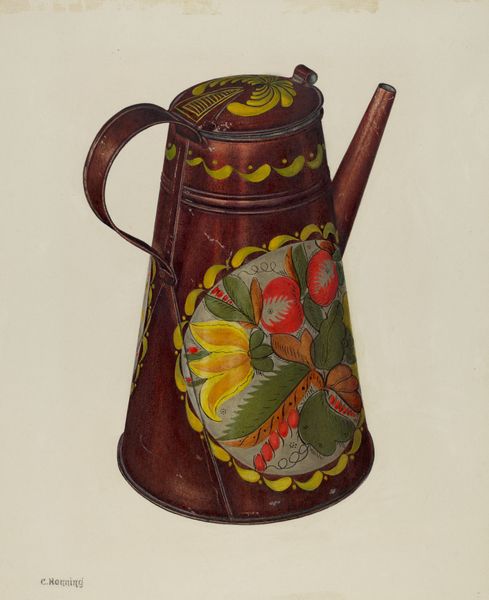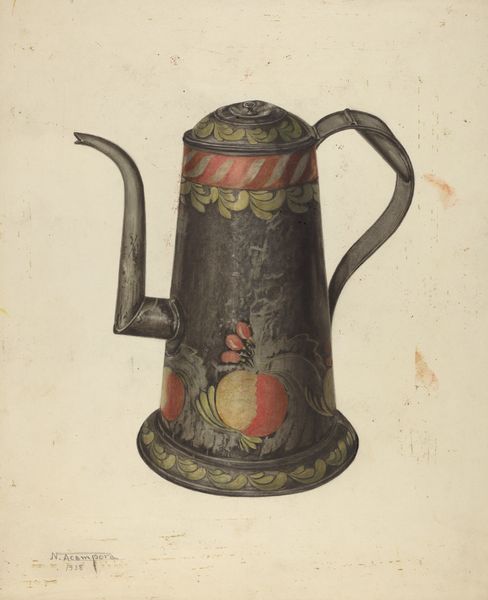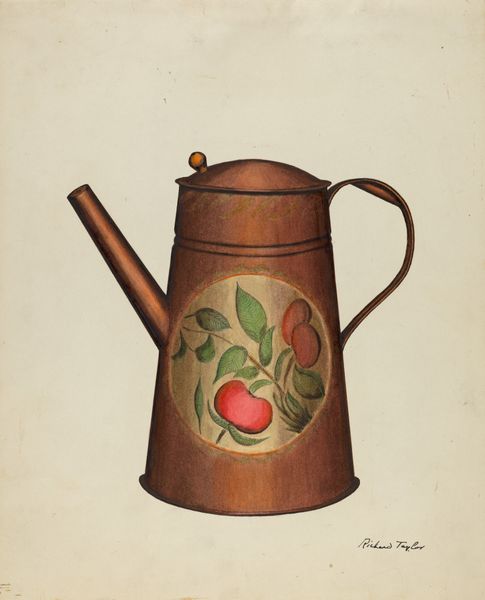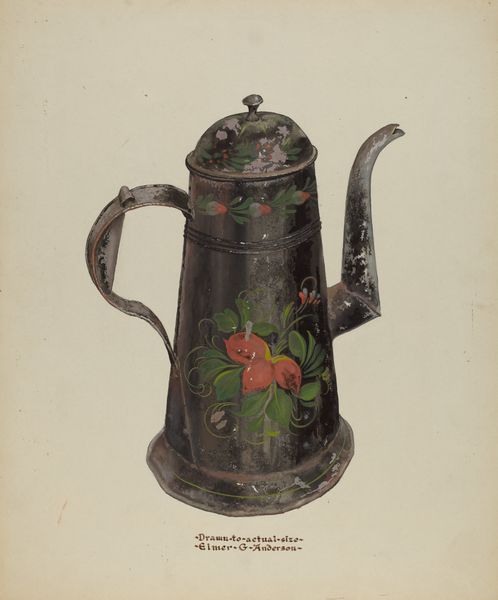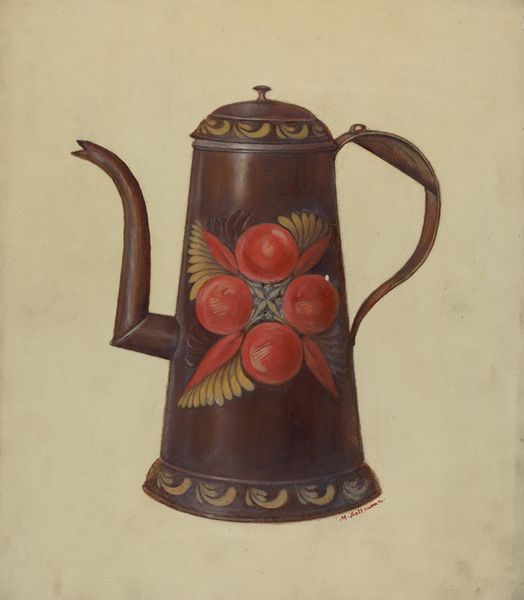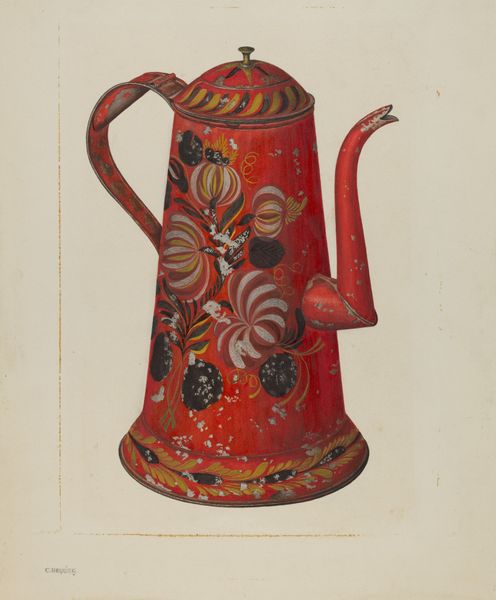
drawing, watercolor
#
drawing
#
caricature
#
oil painting
#
watercolor
#
coloured pencil
#
decorative-art
#
watercolor
Dimensions: overall: 28.9 x 22.8 cm (11 3/8 x 9 in.) Original IAD Object: 10 1/4" high
Copyright: National Gallery of Art: CC0 1.0
Editor: Here we have Janet Riza's "Toleware Coffee Pot," created sometime between 1935 and 1942, rendered in watercolor. It’s so detailed! What’s your interpretation of this piece? Curator: This watercolor raises some interesting questions about labor and value. Notice how meticulously the artist has depicted the decorative elements, seemingly celebrating a mass-produced object. Think about the socio-economic context; was Riza commenting on the shift toward consumer culture during the late 1930s and early 40s? Was she perhaps questioning traditional hierarchies that separated "high" art from functional objects? Editor: That’s interesting. It’s easy to just see it as a simple still life, but your approach reveals layers of social commentary within a seemingly domestic scene. Do you see a relationship with commercial manufacturing in her work? Curator: Absolutely. Consider the precise rendering. Riza clearly engages with and elevates the craftsmanship involved, mirroring the increasing focus on mass-produced goods during that era. We might even ponder whether Riza deliberately chose to represent toleware—typically made by skilled artisans replicating decorative elements with quick efficient strokes on functional metalware–to evoke notions of industrial labor. By choosing to employ precise strokes using an artist’s medium in watercolor, does it become something “more”? Editor: So, she’s almost drawing attention to the process, both of manufacturing the pot itself and then depicting it in art. It's fascinating how she makes us reconsider the value we place on everyday objects and the work involved in making them, both in industry and the arts. Curator: Exactly. And perhaps by analyzing Riza's tools, like the drawing materials themselves, and the depicted artifact, it’s possible to better question what makes an object high art. Editor: I’ve learned so much about this artwork through our discussion today. Thank you! Curator: It was my pleasure! I also rethought my notions about artistic expression and industrial production in America.
Comments
No comments
Be the first to comment and join the conversation on the ultimate creative platform.
